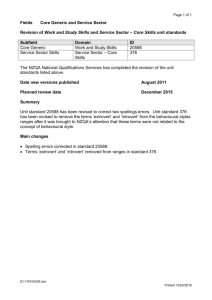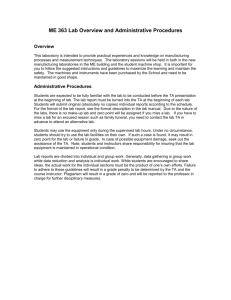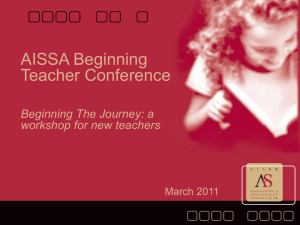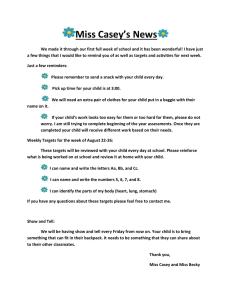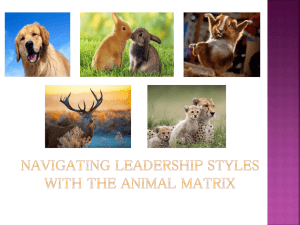Myers-Briggs Personality Preferences
advertisement
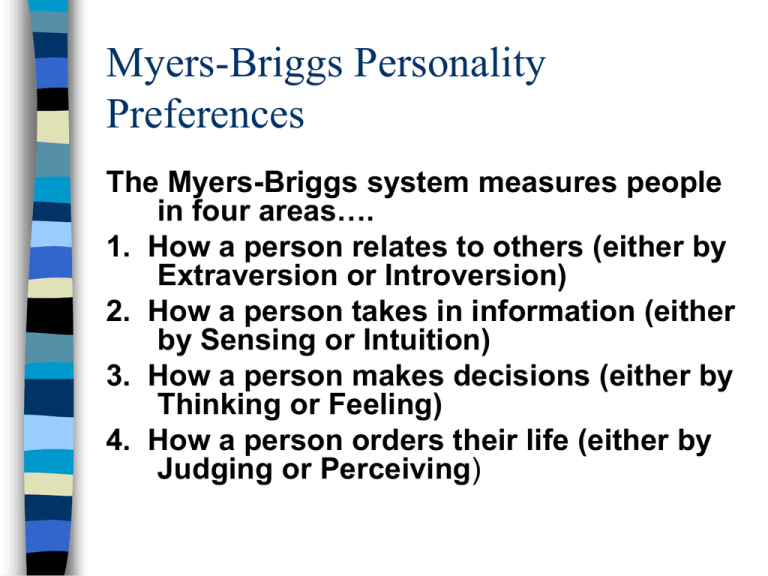
Myers-Briggs Personality Preferences The Myers-Briggs system measures people in four areas…. 1. How a person relates to others (either by Extraversion or Introversion) 2. How a person takes in information (either by Sensing or Intuition) 3. How a person makes decisions (either by Thinking or Feeling) 4. How a person orders their life (either by Judging or Perceiving) Introvert (I) – An introvert is a person whose interest is generally directed inward toward his own feelings and thoughts Extrovert (E) – An extrovert is someone whose attention is directed toward other people and the outside world. Sensor (S) – This person uses the five senses (touching, seeing, hearing, smelling, tasting) as the preferred method of taking in and absorbing information. Intuitive (N) – This person uses instincts as the preferred method of dealing with information. Thinker (T) – Make decisions based on logic and objective consideration Feeler (F) – Make decisions based on our personal, subjective value systems Judger (J) – Organized and purposeful, and more comfortable with scheduled, structured environments Perceiver (P) – Flexible and diverse, and more comfortable with open, casual environments Where do we fit in? Extrovert / Introvert Sensing / Intuitive Thinker / Feeler Judging / Perceptive 75% of the population I am seen as “outgoing” or as a “people person.” I feel comfortable in groups and like working in them. I have a wide range of friends and know lots of people. I sometimes jump too quickly into an activity and don’t allow enough time to think it over. Before I start a project, I sometimes forget to stop and get clear on what I want to do and why. 25% of the population I am seen as “reflective” or “reserved.” I feel comfortable being alone and like things I can do on my own. I prefer to know just a few people well. I sometimes spend too much time reflecting and don’t move into action quickly enough. I sometimes forget to check with the outside world to see if my ideas really fit the experience. 75% of the population I remember events as snapshots of what actually happened. I solve problems by working through facts until I understand the problem. I am pragmatic and look to the “bottom line.” I start with facts and then form a big picture. I trust experience first and trust words and symbols less. Sometimes I pay so much attention to facts, either present or past, that I miss new possibilities. 25% of the population I remember events by what I read “between the lines” about their meaning. I solve problems by leaping between different ideas and possibilities. I am interested in doing things that are new and different. I like to see the big picture, then to find out the facts. I trust impressions, symbols, and metaphors more than what I actually experienced Sometimes I think so much about new possibilities that I never look at how to make them a reality. 50% of the population I enjoy technical and scientific fields where logic is important. I notice inconsistencies. I look for logical explanations or solutions to most everything. I make decisions with my head and want to be fair. I believe telling the truth is more important than being tactful. Sometimes I miss or don’t value the “people” part of a situation. I can be seen as too task-oriented, uncaring, or indifferent. 50% of the population I have a people or communications orientation. I am concerned with harmony and nervous when it is missing. I look for what is important to others and express concern for others. I make decisions with my heart and want to be compassionate. I believe being tactful is more important than telling the “cold” truth. Sometimes I miss seeing or communicating the “hard truth” of situations. I am sometimes experienced by others as too idealistic, mushy, or indirect. 50% of the population I like to have things decided. I appear to be task oriented. I like to make lists of things to do. I like to get my work done before playing. I plan work to avoid rushing just before a deadline. Sometimes I focus so much on the goal that I miss new information. 50% of the population I like to stay open to respond to whatever happens. I appear to be loose and casual. I like to keep plans to a minimum. I like to approach work as play or mix work and play. I work in bursts of energy. I am stimulated by an approaching deadline. Sometimes I stay open to new information so long I miss making decisions when they are needed. All types are equal!! The goal of knowing about personality types is to understand and appreciate differences between people. As all types are equal, there is no best type.

